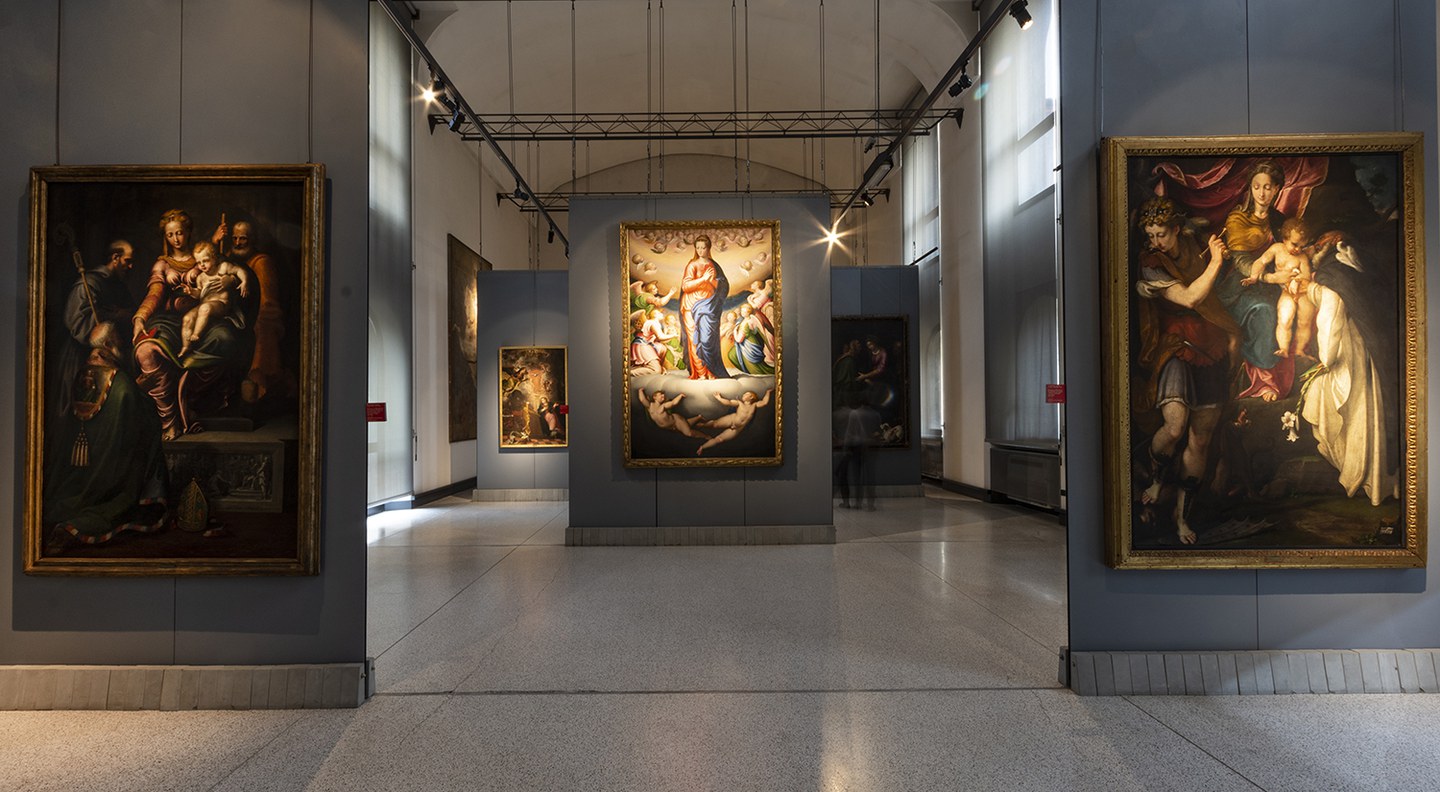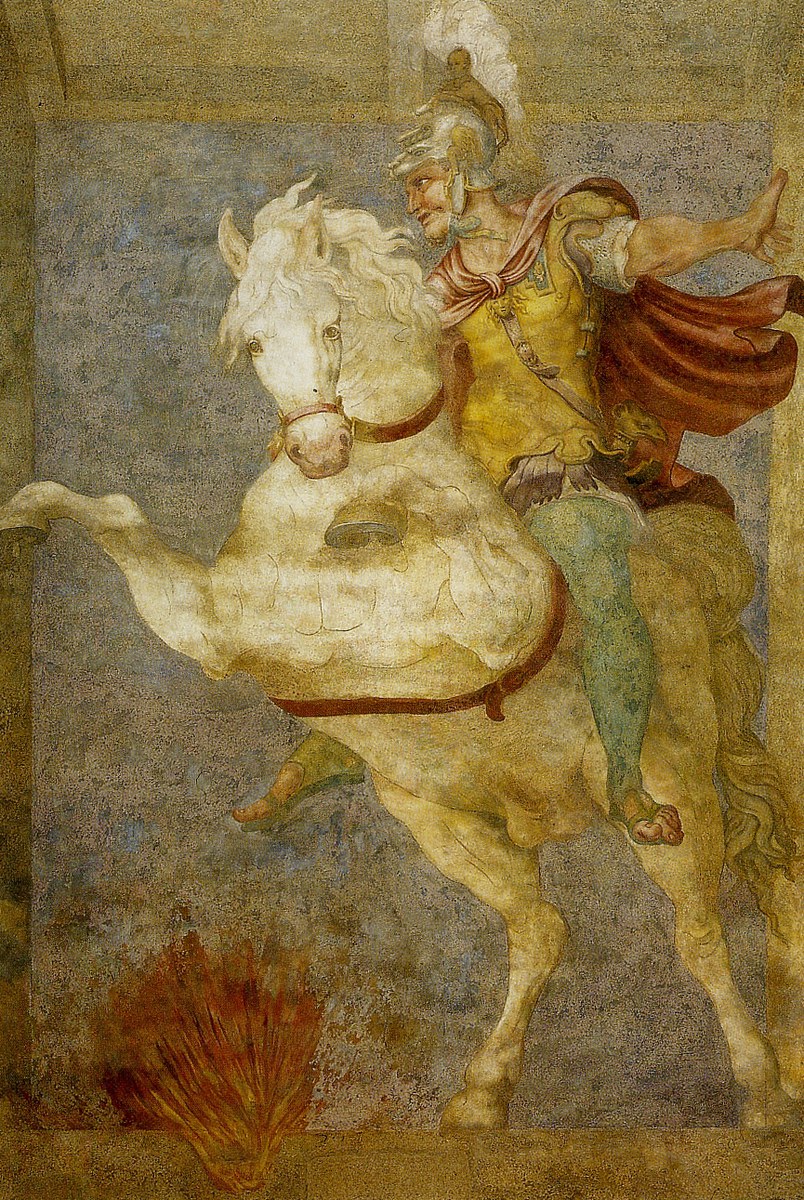Museo Civico "Ala Ponzone"
Room of the 16th Century


Room of the 16th Century
Questo affresco venne strappato dalla facciata di un antico edificio posto in contrada Curzia, odierna Via Grandi e riportato su tela. La contrada aveva assunto il nome dall’eroe romano Marco Curzio, protagonista di una leggenda, secondo cui un’enorme voragine si sarebbe aperta nel foro e solo sacrificando il bene più prezioso per i Romani si sarebbe richiusa. L’affresco raffigura l’eroe, che si lancia nella fossa e precipita con il proprio cavallo, volendo dimostrare che nulla era più importante del coraggio. L’opera è stata riferita a Giulio Campi che sembra qui trarre ispirazione dall’illusionismo prospettico che Pordenone aveva a quel tempo già rivelato nei suoi affreschi per la Cattedrale. This fresco was torn from the facade of an ancient building located in contrada Curzia (where there is today Via Grandi) and then put on the canvas. The contrada (district) had the name of the famous Roman hero Marcus Curtius, protagonist of an interesting legend. According to this story a huge sinkhole was opened in the forum (main square) and only donating the most precious Roman good it would have closed. The fresco represents the hero while he is jumping in the hole with his horse, demonstrating that nothing is more important than the courage. The artwork was attributed to Giulio Campi who was probably inspired by the same prospective tricks revealed by Pordenone in his fresco for the Cathedral